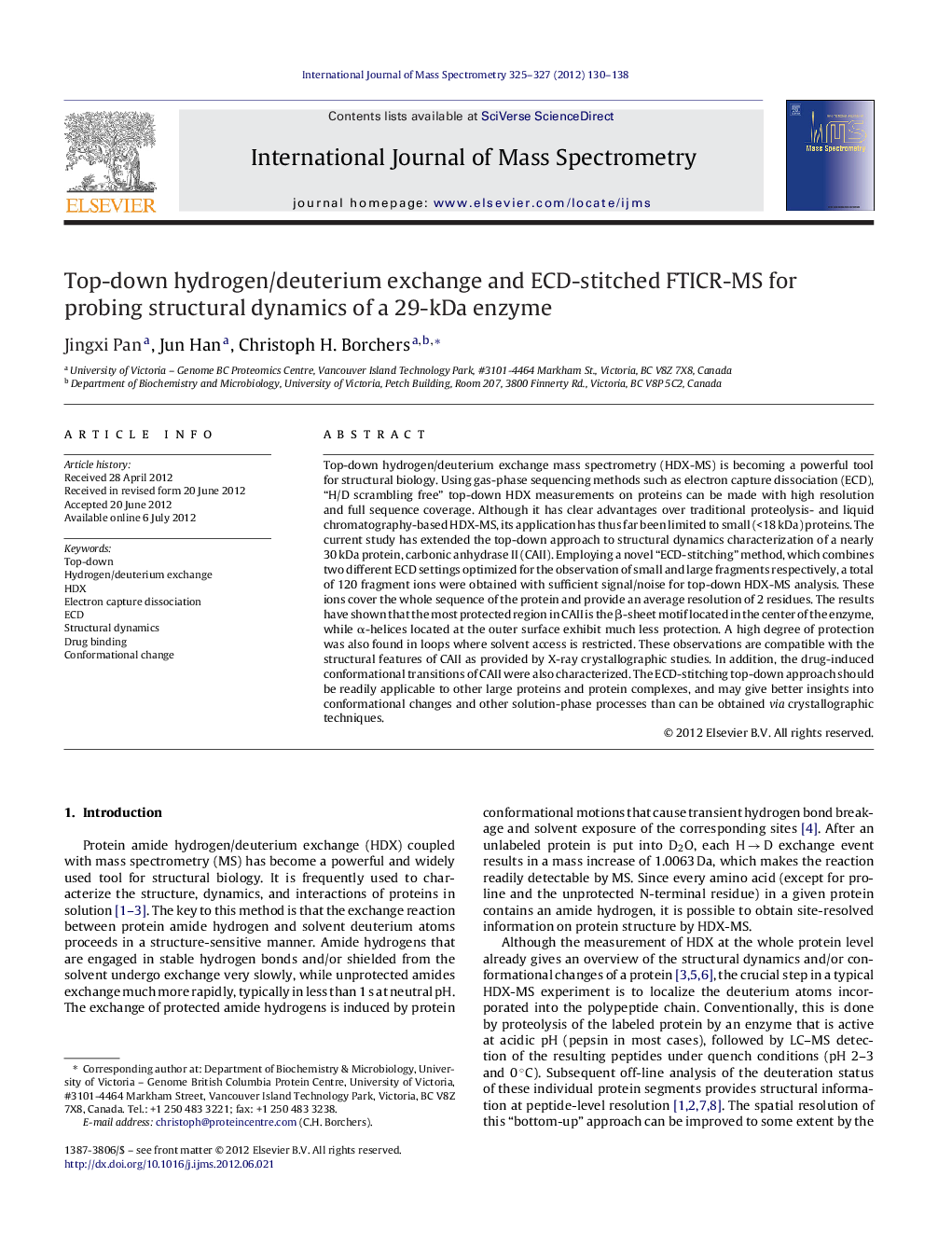| Article ID | Journal | Published Year | Pages | File Type |
|---|---|---|---|---|
| 1192213 | International Journal of Mass Spectrometry | 2012 | 9 Pages |
Top-down hydrogen/deuterium exchange mass spectrometry (HDX-MS) is becoming a powerful tool for structural biology. Using gas-phase sequencing methods such as electron capture dissociation (ECD), “H/D scrambling free” top-down HDX measurements on proteins can be made with high resolution and full sequence coverage. Although it has clear advantages over traditional proteolysis- and liquid chromatography-based HDX-MS, its application has thus far been limited to small (<18 kDa) proteins. The current study has extended the top-down approach to structural dynamics characterization of a nearly 30 kDa protein, carbonic anhydrase II (CAII). Employing a novel “ECD-stitching” method, which combines two different ECD settings optimized for the observation of small and large fragments respectively, a total of 120 fragment ions were obtained with sufficient signal/noise for top-down HDX-MS analysis. These ions cover the whole sequence of the protein and provide an average resolution of 2 residues. The results have shown that the most protected region in CAII is the β-sheet motif located in the center of the enzyme, while α-helices located at the outer surface exhibit much less protection. A high degree of protection was also found in loops where solvent access is restricted. These observations are compatible with the structural features of CAII as provided by X-ray crystallographic studies. In addition, the drug-induced conformational transitions of CAII were also characterized. The ECD-stitching top-down approach should be readily applicable to other large proteins and protein complexes, and may give better insights into conformational changes and other solution-phase processes than can be obtained via crystallographic techniques.
Graphical abstractFigure optionsDownload full-size imageDownload high-quality image (202 K)Download as PowerPoint slideHighlights► A new “ECD-stitching” method is demonstrated on a 29 kDa protein, CAII. ► Results agree with structural features of CAII determined by X-ray crystallography. ► ECD-stitching top-down HDX was also applied to changes induced by drug binding. ► HDX showed changes due to drug binding in distal residues in hinge regions of CAII. ► X-ray studies showed no differences between drug-free and FSM-bound CAII structures.
